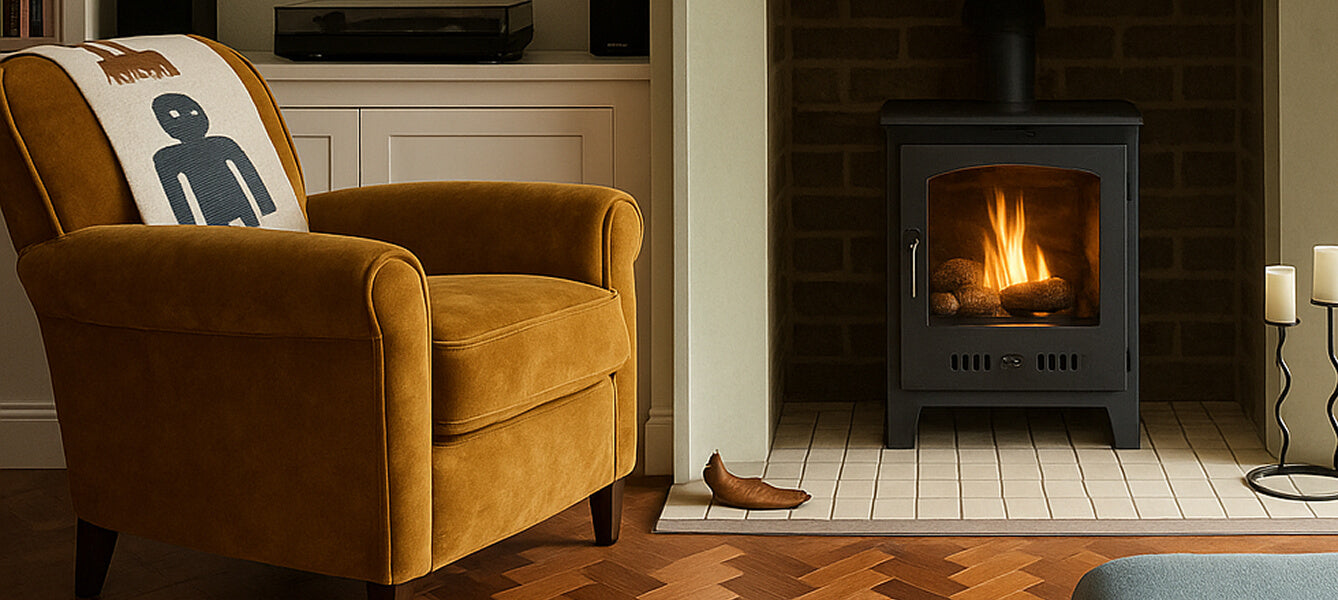
Gel Fireplaces: What to Know Before You Buy or Upgrade
Looking for a stylish, real-flame fireplace without the hassle of chimneys, smoke, or complicated installation? You might have come across gel fireplaces, a popular alternative fuel option once praised for clean burning and easy setup.
But are gel fires still the best choice today?
Let’s break down what you need to know before you buy, and explore some better modern alternatives.

1. Are Gel Fireplaces Eco-Friendly?
Gel fireplaces run on alcohol-based gel fuel, making them much cleaner than traditional wood-burning stoves. They produce:
- No smoke
- No soot
- Minimal carbon dioxide emissions
This makes gel fires a more environmentally friendly option compared to coal or wood fires.
However, bioethanol fireplaces have largely overtaken gel fires as the top eco-choice.
Bioethanol fuel, derived from renewable crops like sugarcane and corn, is carbon-neutral, offering similar benefits with fewer drawbacks (as you’ll see below).
Looking for cleaner alternatives? Explore bioethanol fireplaces

2. Gel Fireplaces Come in a Range of Styles
One reason gel fireplaces became popular is their flexibility. Because gel fuel doesn’t require a flue or chimney, these fires can be installed almost anywhere:
- Wall-mounted units
- Freestanding stoves
- Mantelpiece inserts
- Modern glass designs
This freedom made them a hit with apartment dwellers, renters, and anyone wanting a fuss-free fireplace.
Need even more design options? Bioethanol fires offer wall-mounted, free-standing, woodburner-style, and even outdoor models, giving you even more ways to match your décor.

3. Gel Fuel Fires Require Careful Safety Handling
Although gel fireplaces are cleaner than wood fires, they still produce a real flame, and that means certain safety rules apply.
Top gel fireplace safety tips:
- Only use gel fuel designed for indoor use.
- Keep gel fuel stored in a cool, dry place, away from direct sunlight or heat sources.
- Always extinguish flames properly using long-handled tools, gel fuel cans get very hot.
- Avoid buying cheap, unverified fuels, which may burn poorly or emit harmful gases.
Important: Never attempt to refill or move a lit or recently used gel fuel can as residual heat can cause flare-ups.
Pro Tip: Read our fireplace safety guide for more smart tips when dealing with real flames indoors.
4. How Much Heat Do Gel Fireplaces Actually Produce?
One of the biggest misconceptions about gel fireplaces is their heating ability.
Here’s the reality:
- A single can of gel fuel produces around 3,000 BTUs.
- For comparison, a small wood-burning stove can produce 30,000–40,000 BTUs.
Translation: Gel fires provide ambient warmth but are not efficient as a main heat source, especially in larger rooms.
If you’re hoping to fully heat a living room or open-plan space, you’ll likely need central heating or an additional source.
Looking for a fireplace that gives real heat? Discover bioethanol fires that produce stronger, adjustable flames.
5. Why Many Buyers Now Choose Bioethanol Fireplaces
While gel fireplaces opened the door to ventless, portable real-flame heating, today bioethanol fireplaces offer clear advantages.
Benefits of bioethanol over gel fuel:
- Adjustable flames: Control the size and heat output easily.
- Better scent options: Choose scented fuels or ultra-low odour blends.
- Cleaner burning: No sticky residue or alcohol smell.
- Higher heat output: Ideal for supplementary heating in medium rooms.
- Greater design variety: From traditional to ultra-modern styles.
In short: Biofires deliver the real flame atmosphere people want, but with better performance, better heat, and fewer compromises.

Quick FAQ: Can I Still Buy Gel Fireplaces in the UK?
Yes, gel fireplaces are still available, but they are less common than they used to be. Many major brands and retailers have shifted focus to bioethanol fireplaces, which offer broader appeal and better overall performance.
Final Thoughts: Is a Gel Fireplace Still Worth It?
If you’re purely looking for decorative flames with a little supplementary warmth, a gel fireplace might still meet your needs.
But if you want:
- Adjustable heat
- Better scent control
- A wider range of beautiful designs
...then switching to a bioethanol fireplace is a smarter long-term choice.
They’re just as easy to install, just as clean-burning and deliver better flexibility, safety and heat output.
Ready to upgrade? Browse our full range of stylish bioethanol fireplaces today.

